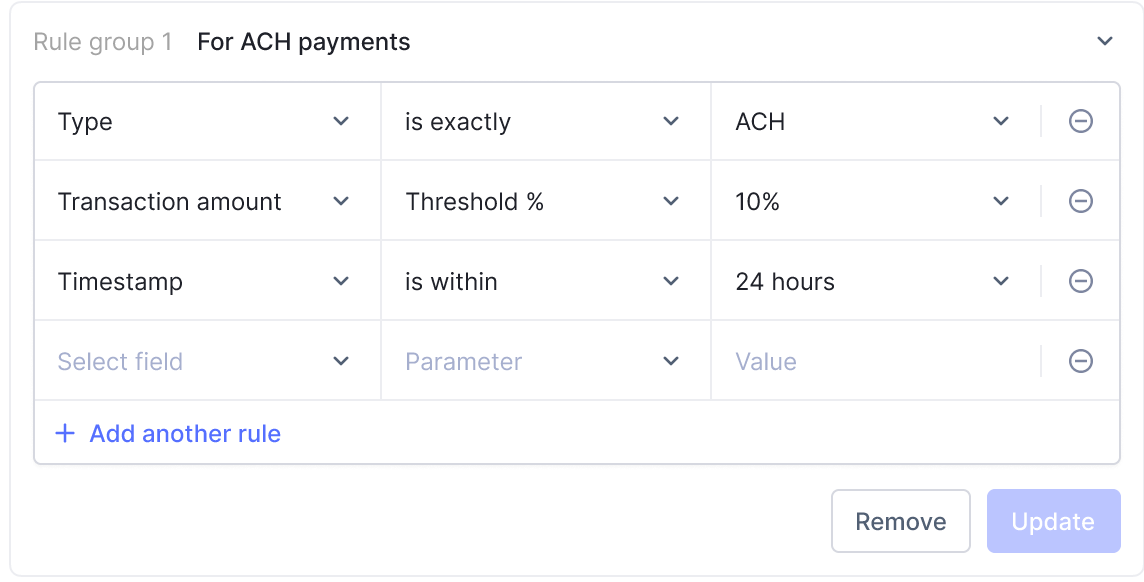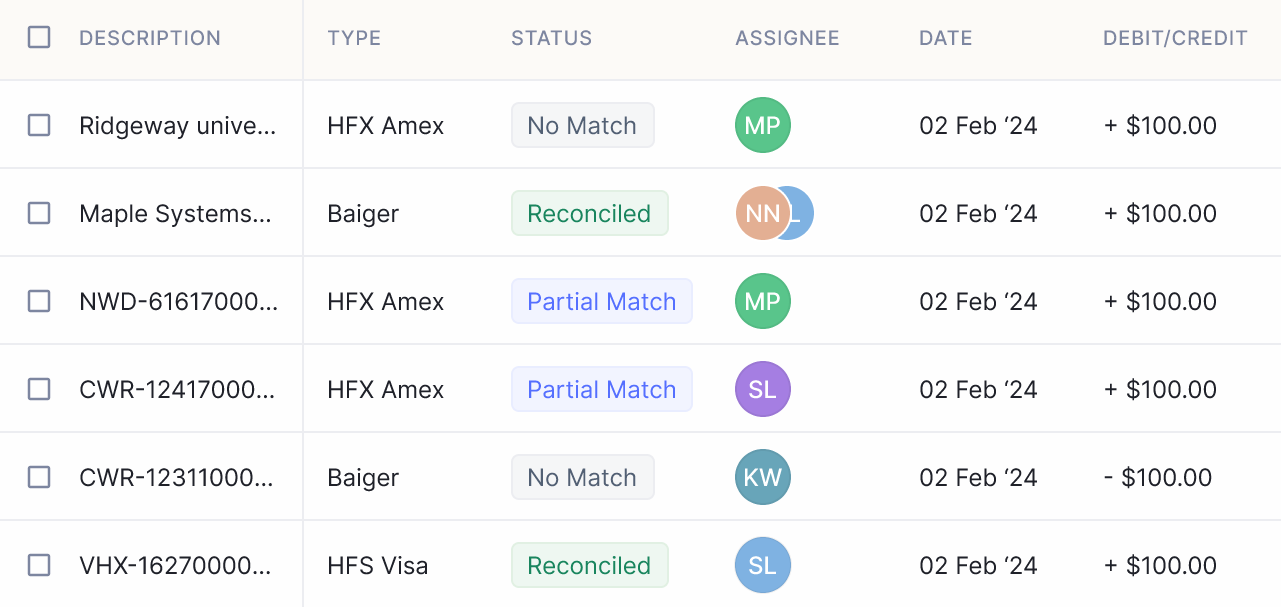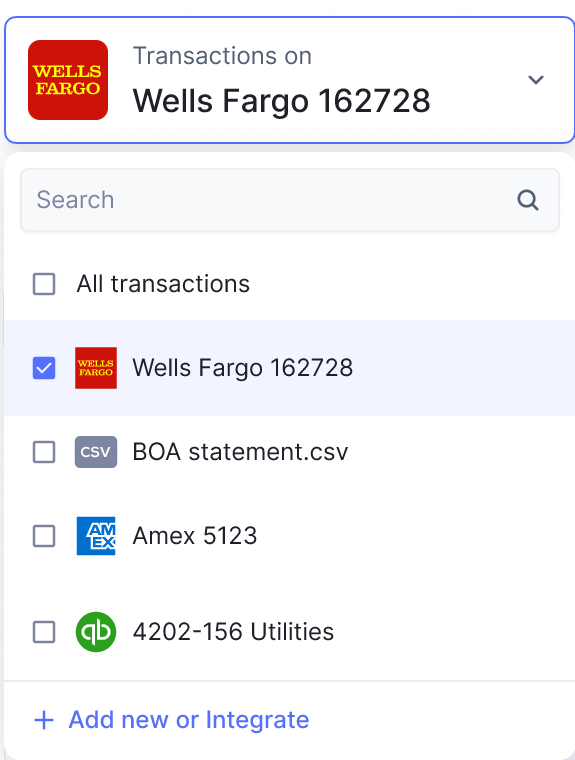Audit Bank Reconciliation Guide
Both internal and external accounting audits are essential parts of financial management as well as organizational risk management. A bank reconciliation audit is one such process that helps in identifying financial gaps or discrepancies. In addition to companies performing bank reconciliations internally at least once a month, it is recommended that external auditors conduct a thorough bank reconciliation process biannually or annually to verify the internal reconcliaition performed by the inhouse teams.
This article discusses the significance of bank reconciliation audits and the role of automation in streamlining the process.
Looking out for a Reconciliation Software?
Check out Nanonets Reconciliation where you can easily integrate Nanonets with your existing tools to instantly match your books and identify discrepancies.
What is Bank Reconciliation?
Bank account reconciliation compares the financial data in a company’s internal accounting books (e.g., the General Ledger) with the data in its bank statement. When all entries and the balances match precisely, the bank account is deemed “reconciled.” By comparing the data in the company’s accounting system with the bank statement, discrepancies such as double payments, calculation errors, or fraudulent transactions can be identified and rectified. This process ensures the integrity of financial data and confirms that the reported financial position is accurate. Bank reconciliation typically involves gathering bank statements and transaction records, comparing them with the corresponding entries in the company’s accounting records, and investigating any discrepancies. Through this meticulous process, businesses can mitigate the risk of errors, fraud, and legal complications, thus safeguarding their financial health and compliance.
What is Bank Reconciliation Audit and How Does it Work?
Bank reconciliation audit refers to the comprehensive examination of a company’s bank reconciliation processes and records by an independent auditor. This audit aims to verify the accuracy and completeness of the bank reconciliation procedures and ensure that they are conducted in accordance with established accounting standards and regulatory requirements. The auditor scrutinizes various aspects of the reconciliation process, including the comparison of bank statements with the company’s accounting records, the identification and resolution of discrepancies, and the adherence to internal controls and procedures. Here’s how Reconciliation Audits work:
- Planning Stage: The audit process begins with thorough planning that includes defining audit objectives, scope, and timelines. The auditor assesses risks, identifies key areas for review, and develops an audit plan tailored to the organization’s specific needs.
- Data Collection: The auditor collects relevant data, including bank statements, transaction records, reconciliation reports, and supporting documentation. This data serves as the basis for the audit examination.
- Examination and Analysis: The auditor scrutinizes the reconciled bank statements and compares them with the corresponding entries in the company’s accounting records. They analyze transaction details, such as amounts, dates, and descriptions, to identify discrepancies, errors, or irregularities.
- Testing Controls: The auditor evaluates the effectiveness of internal controls related to bank reconciliation processes. This may involve testing the segregation of duties, authorization procedures, and documentation practices to ensure compliance with internal policies and regulatory requirements.
- Documentation Review: The auditor reviews the documentation supporting the bank reconciliation process, including reconciliations, adjustments, and explanations for discrepancies. They assess the adequacy and accuracy of documentation to support the integrity of financial records.
- Communication and Reporting: Throughout the audit process, the auditor communicates findings and observations to management and relevant stakeholders. At the conclusion of the audit, they prepare a comprehensive audit report summarizing their findings, including any identified issues, recommendations for improvement, and overall audit conclusions.
- Follow-Up and Implementation: After presenting the audit report, the auditor may work with management to address any identified deficiencies or areas for improvement. They provide guidance on implementing corrective actions and monitoring progress to ensure the effectiveness of remedial measures.
- Continuous Monitoring: Reconciliation audits may be conducted periodically to monitor ongoing compliance and assess the effectiveness of implemented controls. This iterative process promotes continuous improvement and ensures the integrity of the bank reconciliation function over time.
The Importance of Reconciliation Audits
The auditing of the reconciliation processes, especially bank reconciliation by an external financial expert is important for the following reasons:
- Accuracy Assurance: Bank reconciliation audits ensure the accuracy of financial records by verifying that the balances in the company’s bank accounts match the corresponding entries in the accounting system.
- Error Detection: These audits help in detecting errors such as incorrect postings, duplicate transactions, or unauthorized withdrawals, thereby reducing the risk of financial misstatements.
- Fraud Prevention: By scrutinizing bank transactions and identifying irregularities, bank reconciliation audits play a crucial role in detecting and preventing fraudulent activities within the organization.
- Compliance Verification: Bank reconciliation audits ensure compliance with regulatory requirements and accounting standards, providing assurance to stakeholders and regulatory authorities regarding the accuracy and integrity of financial reporting.
- Internal Control Evaluation: These audits evaluate the effectiveness of internal controls related to bank reconciliation processes, highlighting areas for improvement and strengthening internal control mechanisms.
- Risk Mitigation: By identifying discrepancies and weaknesses in bank reconciliation procedures, audits help in mitigating the risk of financial losses, reputational damage, and regulatory sanctions.
- Enhanced Decision-Making: Accurate and reliable financial information resulting from bank reconciliation audits enables management to make informed decisions and strategic planning with confidence.
- Investor Confidence: Thorough bank reconciliation audits instill confidence in investors and creditors regarding the financial health and transparency of the organization, thereby attracting investment and facilitating business growth.
- Operational Efficiency: Streamlining bank reconciliation processes through audits enhances operational efficiency, reducing manual effort, and minimizing the time and resources spent on reconciling bank accounts.
- Continuous Improvement: Bank reconciliation audits provide valuable insights and recommendations for enhancing reconciliation processes, promoting continuous improvement in financial management practices within the organization.
Checklist for a Bank Reconciliation Audit
A checklist for a bank reconciliation audit typically includes the following key items:
- Bank Statements: Obtain and review bank statements for the audit period, ensuring they cover the entire reconciliation period and include all relevant accounts.
- Accounting Records: Compare bank statements with the company’s accounting records, including cash receipts, disbursements, and general ledger entries.
- Transaction Details: Analyze transaction details for accuracy, including dates, amounts, descriptions, and classifications.
- Reconciliation Reports: Review reconciliation reports prepared by the company, ensuring they reconcile bank balances with accounting records and provide explanations for any discrepancies.
- Supporting Documentation: Verify the existence and accuracy of supporting documentation, such as receipts, invoices, and bank correspondence, for reconciled transactions.
- Internal Controls: Evaluate the effectiveness of internal controls related to bank reconciliation processes, including segregation of duties, authorization procedures, and documentation practices.
- Compliance: Assess compliance with regulatory requirements and accounting standards, ensuring adherence to relevant laws, regulations, and industry best practices.
- Documentation Quality: Review the quality and completeness of documentation supporting the bank reconciliation process, including reconciliations, adjustments, and explanations for discrepancies.
- Audit Trail: Trace transactions from source documents through the reconciliation process to the final accounting records, ensuring a clear and complete audit trail.
- Accuracy of Adjustments: Verify the accuracy of any adjustments made during the reconciliation process, ensuring they are properly supported, authorized, and recorded.
- Timeliness: Assess the timeliness of the reconciliation process, ensuring reconciliations are completed promptly and within established deadlines.
- Management Review: Confirm that reconciliations are reviewed and approved by management or designated personnel, providing oversight and accountability for the reconciliation process.
- Follow-Up Actions: Identify any discrepancies, errors, or deficiencies uncovered during the audit and recommend appropriate follow-up actions, including corrective measures and process improvements.
- Audit Documentation: Maintain comprehensive documentation of audit procedures, findings, and conclusions, ensuring transparency and accountability in the audit process.
- Communication: Communicate audit findings, observations, and recommendations to management and relevant stakeholders, fostering dialogue and collaboration in addressing identified issues.
This checklist will help auditors effectively evaluate the bank reconciliation process, identify areas for improvement, and provide insights to enhance financial controls and accountability within the organization.
Explore Nanonets for automating bank reconciliation
Audit automation has become a cornerstone strategy for modernizing the auditing process, leveraging advanced technologies like Nanonets to streamline workflows and enhance efficiency. According to a 2021 survey conducted by Forbes among finance and accounts-related executives, nearly all respondents (98%) noted that their external audit firms utilize advanced technology. This utilization of technology contributes significantly to improving audit quality by providing deeper insights into areas of elevated risk, better benchmarking, and broader data coverage. Furthermore, 94% of executives perceive that this technology enhances the overall client experience.
Nanonets, is a smart OCR software that is adept at handling the challenges associated with managing extensive paperwork and manual data entry associated with bank reconciliation audits. At its core, Nanonets’ Optical Character Recognition (OCR) functionality expedites data collection from scanned documents, simplifying document storage and granting rapid access to previously inaccessible details within moments. This capability is crucial, as almost all executives recognize the significance of technology in improving audit quality and client experience.
Nanonets goes beyond basic OCR by leveraging machine learning (ML) algorithms to extract specific entries, such as dates, purchase order numbers, and reference IDs, from a myriad of financial documents. With training, Nanonets achieves over 90% accuracy and can analyze thousands of documents in a fraction of the time. This accuracy and efficiency are essential in addressing the demands of modern audit processes, where large volumes of data need to be processed rapidly and accurately.

Unlike conventional template-based solutions, Nanonets boasts an intelligent document processing algorithm capable of handling previously unseen document types. Its proficiency extends to managing unstructured data, navigating common data constraints, interpreting multi-page documents, tables, and multi-line items effortlessly.

Nanonets operates as a no-code intelligent automation platform, empowering users to customize document processing according to their specific requirements. With the ability to continuously retrain itself and learn from custom datasets, Nanonets consistently delivers outputs with minimal post-processing. This adaptability ensures that audit processes remain agile and responsive to changing requirements, as highlighted by executives who perceive technology as improving audit quality and client experience.

Last but not least, Nanonets facilitates seamless integration with existing systems, including legacy software, CRM, ERP, or RPA platforms. This interoperability ensures a smooth implementation process, allowing organizations to leverage Nanonets’ capabilities without disruption to their existing workflows. This ease of integration aligns with executives’ perceptions that technology enhances the overall client experience.

Take Away
Audits play a crucial role in the bank reconciliation processes by ensuring its accuracy and integrity. Automation tools like Nanonets offer invaluable support to reconciliation audits by streamlining data collection, extraction, and analysis. By leveraging advanced OCR and machine learning algorithms, Nanonets can swiftly process large volumes of financial documents, identify relevant information such as dates, amounts, and transaction details, and flag potential discrepancies for further review. This not only accelerates the audit of the reconciliation process but also enhances its accuracy and reliability, empowering organizations to maintain robust financial controls and uphold the trust and confidence of stakeholders.


